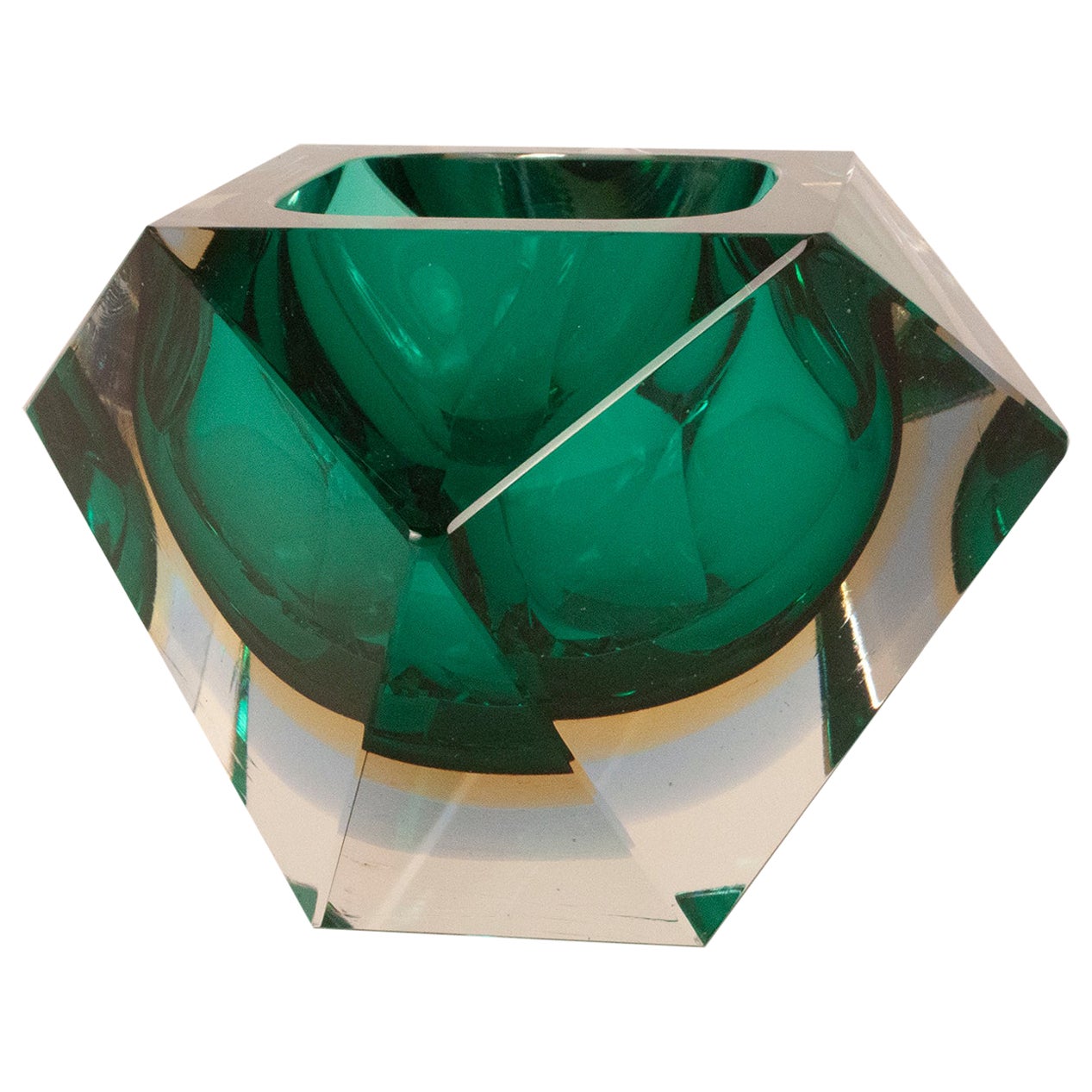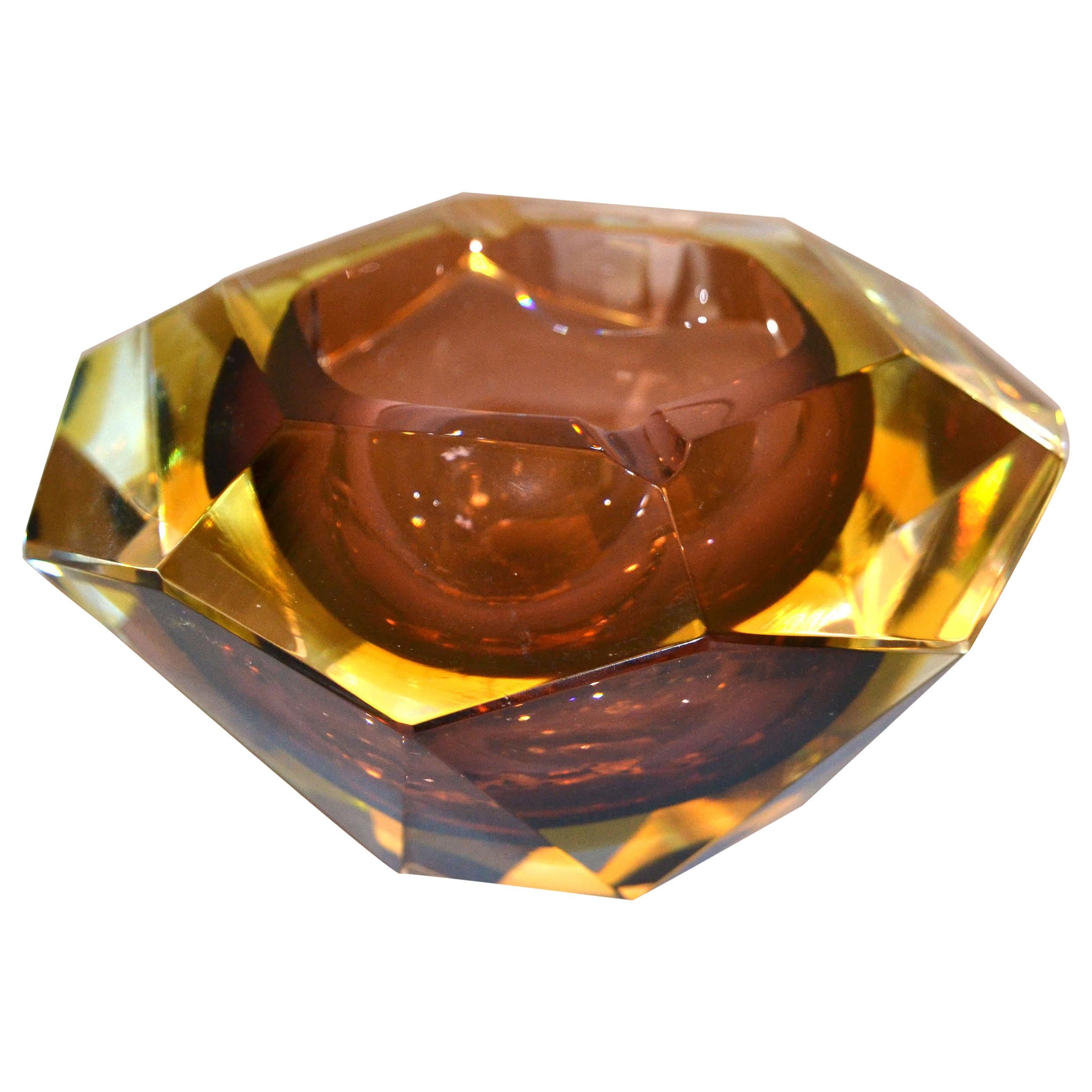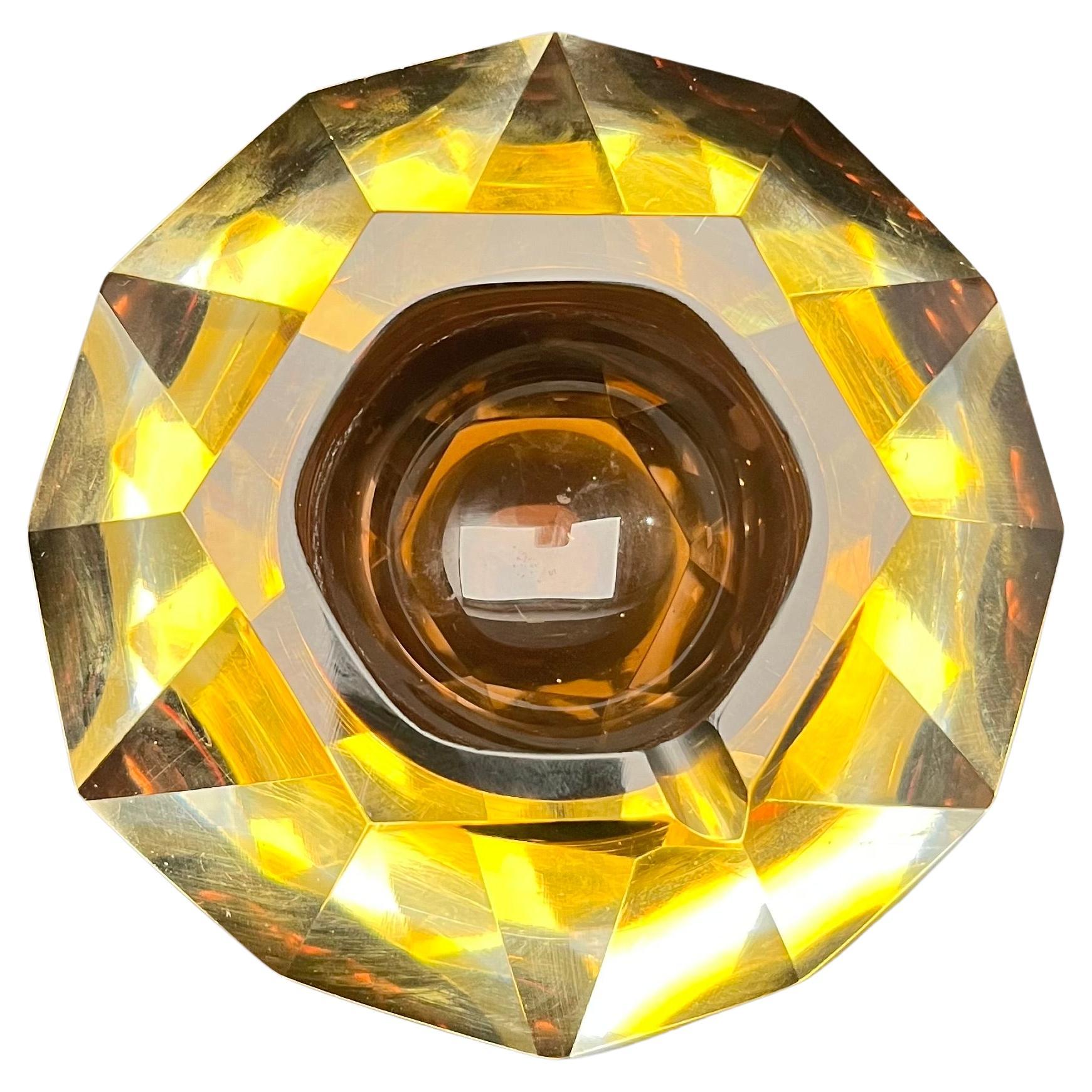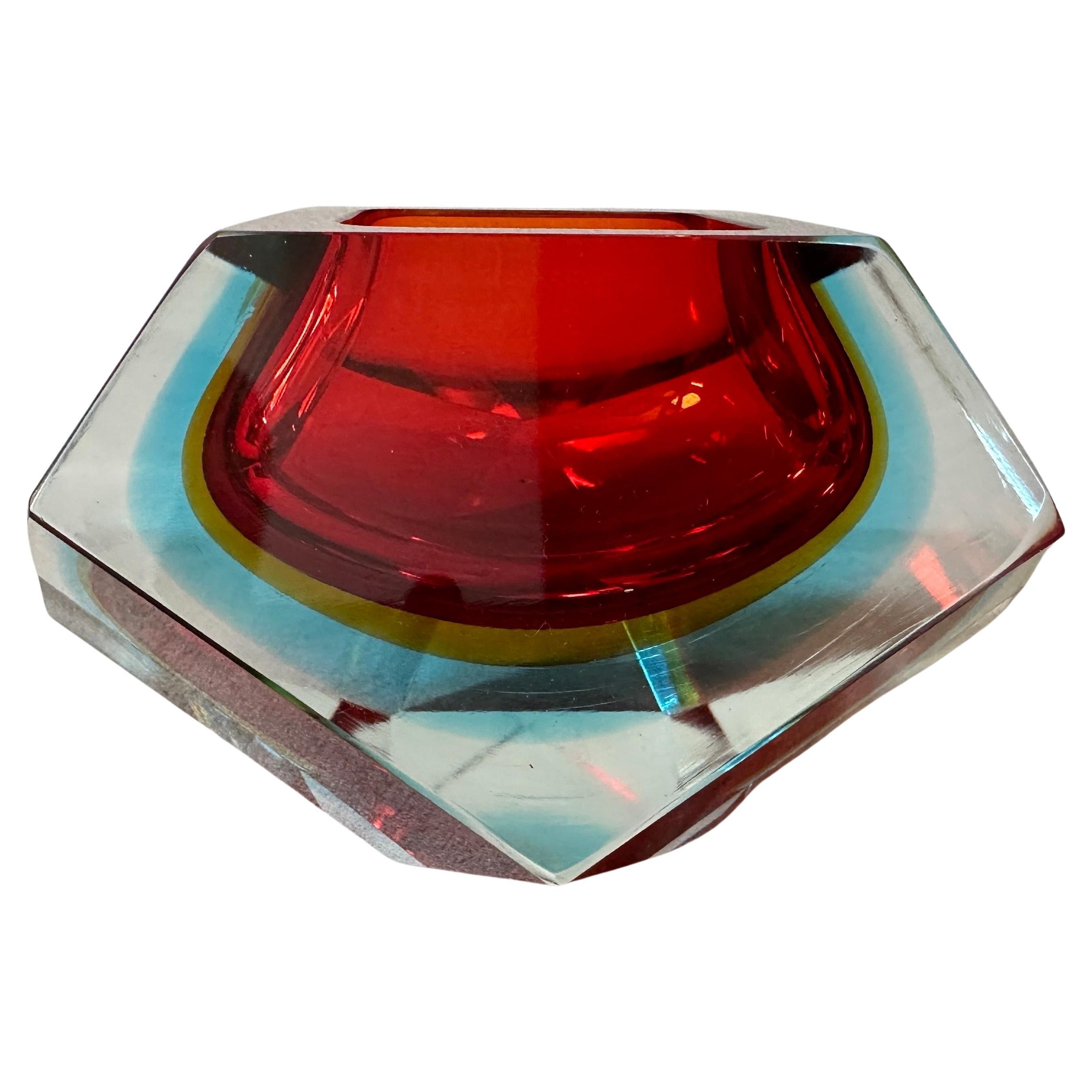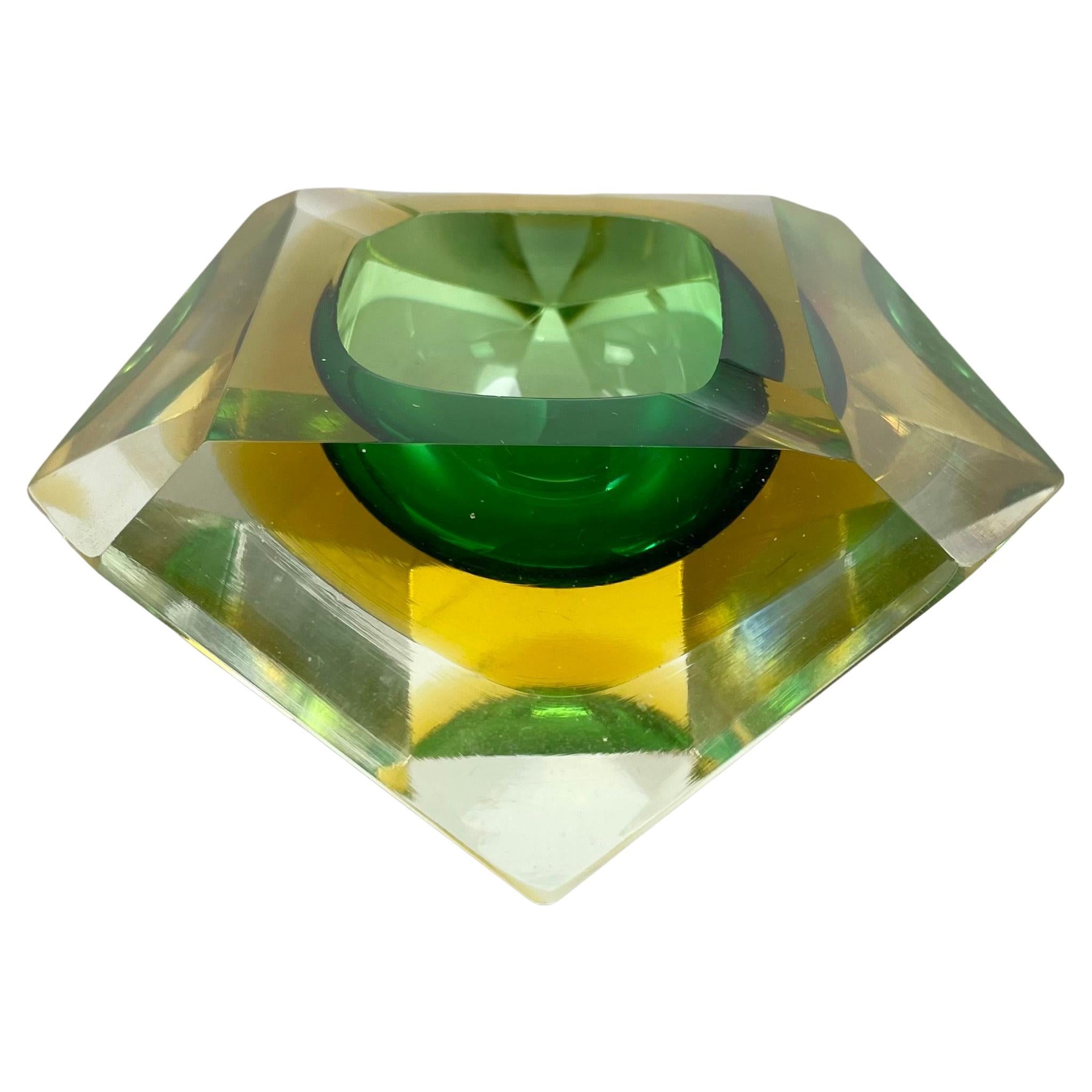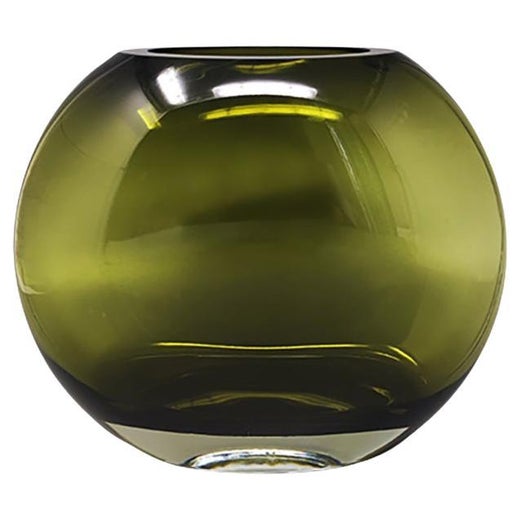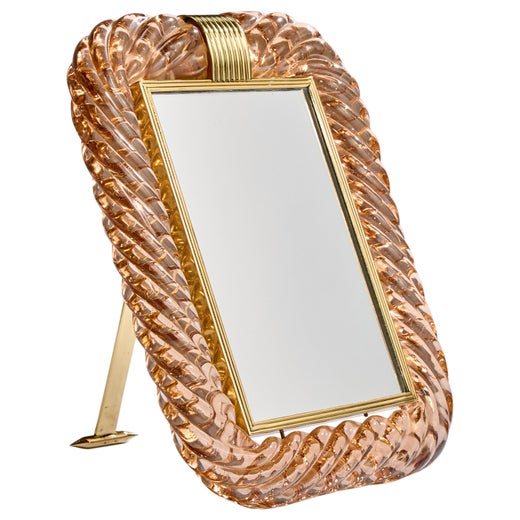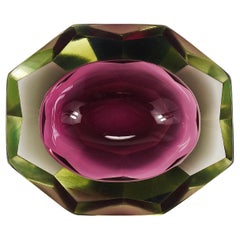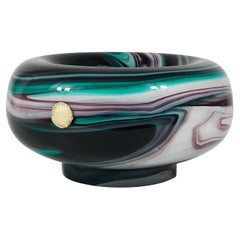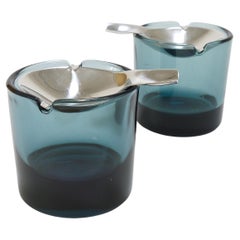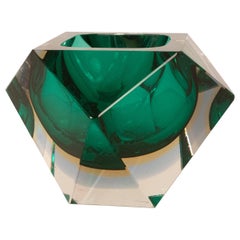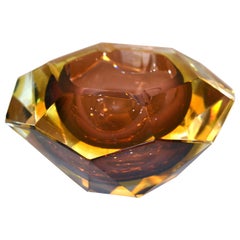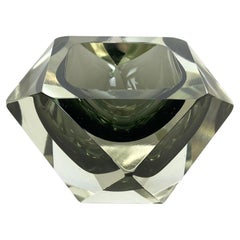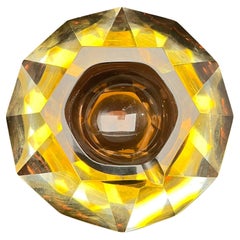1960s Flavio Poli Colorful Faceted Diamond Ashtray by Seguso, Murano, Italy
About the Item
- Creator:Flavio Poli (Designer),Seguso Vetri d'Arte (Manufacturer)
- Dimensions:Height: 4 in (10.16 cm)Diameter: 6 in (15.24 cm)
- Style:Mid-Century Modern (Of the Period)
- Materials and Techniques:
- Place of Origin:
- Period:
- Date of Manufacture:1960s
- Condition:
- Seller Location:Vienna, AT
- Reference Number:1stDibs: LU1015233214292
Flavio Poli
Italian glass artist Flavio Poli’s innovative use of the sommerso technique during the 1950s added a dimension of exquisite beauty and refined elegance to mid-century-era Murano glass design. Today Poli’s vintage table lamps, glass vases, ashtrays and other objects are highly collectible.
Born in Chioggia in 1900, Poli attended the prestigious Istituto d’Arte di Venezia where he trained as a ceramist before turning his attention toward glass art. His career in glass began in 1929 when he worked at the Industrie Vetrerie Artistiche Murano, designing and creating large-scale glass sculptures, urns and bowls.
During the 1930s, Poli was a glass artist for manufacturer Barovier, Seguso and Ferro (later known as Seguso Vetri d’Arte), where he worked alongside pioneering glass master Archimede Seguso. Poli was later appointed artistic director at the Venetian glassworks.
Inspired by Seguso, Poli began to experiment with his own glassblowing techniques. In the 1950s, he helped popularize the decades-old sommerso style, which sees overlapping layers of transparent handblown glass melded through a heating process and immersed in pots of molten colored glass. The style yields a sophisticated and mesmerizing effect — it's as if colored fluids have been trapped inside the layers of clear glass. Poli made use of variations on the technique in many of his pieces, including in designs for vases, bowls, sculptures and more.
Poli’s unparalleled designs and innovative work with the sommerso technique garnered numerous awards and accolades throughout his career. He won five Grand Prix awards at the Milan Triennale and was awarded the Compasso d’Oro prize in 1954. Poli’s designs were also presented at the World’s Fair in Brussels and the Venice Biennale in 1958.
Today, Poli’s work can be found in museums around the world, including the Museum of Modern Art in New York, Murano Glass Museum in Venice, Museo Boncompagni Ludovisi in Rome and the National Gallery of Victoria in Australia.
Find vintage Flavio Poli decorative objects, serveware and lighting on 1stDibs.
Seguso Vetri d'Arte
Members of the Seguso family have been leading figures in the manufacture of glass on the Venetian island of Murano since the late 1300s, but for most collectors of vintage design the name evokes two companies formed in the first half of the 20th century. Seguso Vetri d’Arte, born from a small consortium of master glass artisans that included Archimede Seguso (1909–99), thrived under the artistic directorship of Flavio Poli (1900–84), a designer with an eye for modern forms, color and pattern. Vetreria Archimede Seguso, meanwhile, was founded in 1946, when Seguso opened his own atelier in order to employ classical techniques in the making of modern glassware.
The owners of Seguso Vetri d’Arte were justly proud of their skills as craftsmen, but they were not worldly aesthetes — and they knew it. Poli had studied at the Art Institute of Venice, originally working in ceramics before switching mediums and taking up the art of glass. He introduced new simple forms to the genre — the best known of his designs being the Valva, which resembles a clamshell in profile — and employed several novel techniques such as corroso, which gives glass a rough, emery-board-like finish. Poli’s most collectible works are his sommerso pieces, made with a layering process in which clear and colored-glass vessels are “submerged” within one another, producing a kind of nesting-doll effect in striking, elegant vases with bands of separate and overlapped hues.
At his eponymous workshop, Archimede Seguso often favored highly decorative, age-old techniques employed with modern restraint. His layered-glass Losanghe vessels have the look of an abstract checkerboard while his free-form Merletto vases have delicate, lacy patterns created by painstakingly twisting two heated glass straws to create helixes around the walls of the piece.
Though different in their scope and mission, both of these furnaces bearing the Seguso name created some of the most beautiful, alluring and exquisitely crafted works in all of modern design.
- ShippingRetrieving quote...Shipping from: Vienna, Austria
- Return Policy
More From This Seller
View AllMid-20th Century Italian Mid-Century Modern Decorative Bowls
Art Glass, Blown Glass, Murano Glass
Mid-20th Century Italian Mid-Century Modern Decorative Bowls
Art Glass, Blown Glass, Murano Glass
Mid-20th Century Italian Mid-Century Modern Decorative Bowls
Glass, Art Glass, Murano Glass
Mid-20th Century German Mid-Century Modern Ashtrays
Stainless Steel
Mid-20th Century Italian Mid-Century Modern Decorative Dishes and Vide-P...
Glass, Art Glass, Murano Glass
Mid-20th Century Austrian Mid-Century Modern Ashtrays
Porcelain
You May Also Like
Vintage 1960s Italian Mid-Century Modern Decorative Bowls
Murano Glass
Late 20th Century Italian Mid-Century Modern Tobacco Accessories
Murano Glass
Late 20th Century Italian Mid-Century Modern Ashtrays
Murano Glass
Vintage 1970s Italian Mid-Century Modern Ashtrays
Murano Glass
Mid-20th Century Italian Modern Ashtrays
Murano Glass
Late 20th Century Italian Mid-Century Modern Ashtrays
Murano Glass
